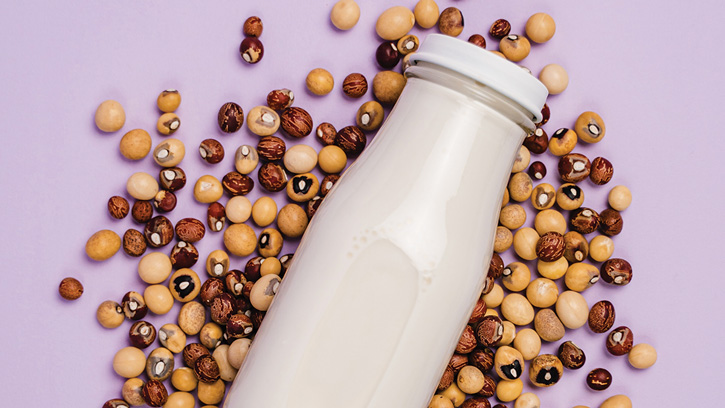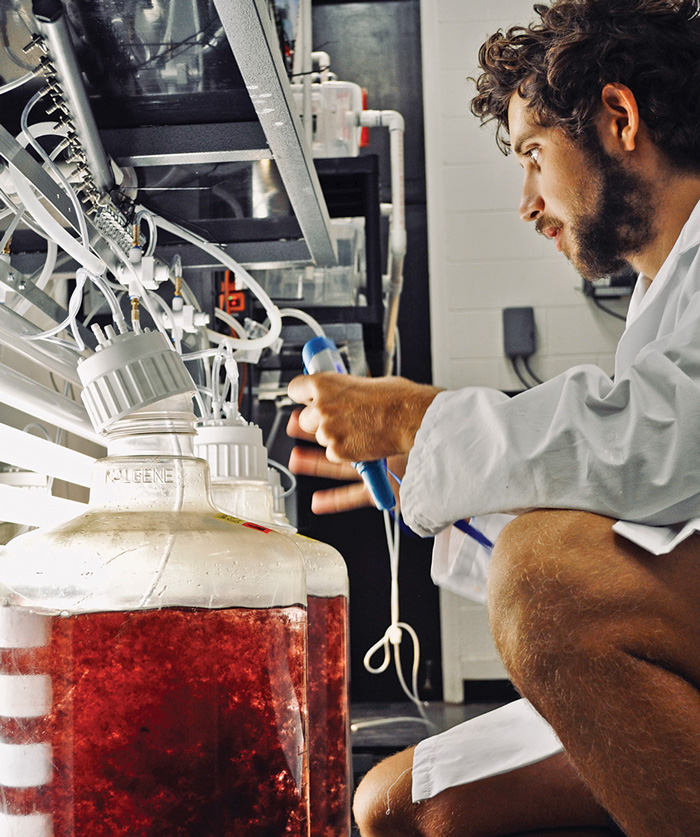Startups Build Sustainable Food Systems
STARTUPS & INNOVATORS
Smart thinking about sustainable approaches to food production were in the spotlight this fall when the Massachusetts Institute of Technology (MIT) hosted its fourth Solve Challenge Finals. Solve Challenge is a social impact pitch competition in which tech-based social entrepreneurs bring forward their ideas for addressing some of the largest problems facing the world. The 2020 challenge themes included Sustainable Food Systems, Health Security & Pandemics, Learning for Girls & Women, Good Jobs & Inclusive Entrepreneurship, and Maternal & Newborn Health. MIT received over 2,600 solutions from 135 countries—an 86% increase in applications year-over-year.
The judges selected 90 finalists from around the world who were deemed the most promising, inventive, and impactful. Ultimately, the judges chose 35 teams to join the MIT Solver community—an honor that comes with a portion of more than $2 million in prize funding, the opportunity to meet with investors and venture capitalists, and the chance to get help from experts on launching or growing their business solutions.
Of the 15 finalists in the Sustainable Food Systems challenge, seven were selected to join the Solver community. Food Technology magazine recently spoke with two of the winners to learn more about their solutions, next steps, and what they hope to gain from the experience.
The Next Plant-Based Milk
Singapore-based startup NamZ debuted six years ago to help solve the “nutritional paradox”—the coexistence of obesity and undernutrition—that it sees having a detrimental effect on both health and the environment. To address this, NamZ has focused its efforts on developing “future fit” crops that are climate resilient, drought tolerant, and can produce good yields on degraded or marginalized land. One of these crops, the bambara groundnut, was the basis for NamZ’s solution—Bambara Milk—which it submitted for the 2020 Solve Challenge. The bambara groundnut helps fix atmospheric nitrogen and contributes to soil fertility while also being high in protein.
“Our initial plan is to commercialize Bambara Milk to enter the plant-based milk/beverage market in Southeast Asia as the starting point,” explains Mark Lim, corporate strategist at NamZ. “We plan to expand to larger markets, including the United States and China, in the next few years.”
Plant-based products are enjoying a moment in the spotlight, and NamZ hopes to take advantage of consumer interest and highlight its product’s main advantage—a high protein content. “Based on our own nutritional analysis of competitors’ plant-based milk, we discovered that our current formulation of Bambara Milk has at least three times the protein content compared to that of almond and oat milk (on a per liter basis),” says Lim.
However, many consumers—especially in Western nations—are unfamiliar with the bambara groundnut, so consumer education is needed. “Bambara groundnut is a crop that is still relatively unknown to the global market,” says Lim. “However, consumers today are becoming increasingly conscious about healthier and more sustainable foods … and are more open to explore novel foods that meet these criteria.”
Besides creating a more sustainable and healthful beverage product, NamZ’s mission is to generate new income opportunities for smallholder farming communities. Currently, the company works with two farming villages in Ghana where villagers grow bambara groundnut for sustenance as well as an insurance crop. NamZ partners with these communities to scale up production without adversely impacting their way of life and to offtake supplies from them as directly as possible [avoiding intermediaries] to ensure they can retain more revenue.
As a small startup, NamZ understands that having boots on the ground throughout Africa and Asia would be costly. “As we expand our efforts outside of Ghana, we plan to collaborate with regional partners (particularly in Southeast Asia) that have the capacity to engage smallholder farming communities to cultivate the bambara groundnut on a larger scale,” says Lim. The company is in talks with nonprofit organizations such as the International Crops Research Institute for the Semi-Arid Tropics and the Earthworm Foundation. “By partnering with such organizations, we can leverage their expertise and network to expand our bambara groundnut smallholder farmer outreach program without straining our in-house resources,” notes Lim.
Startup team members are excited about NamZ’s inclusion as an MIT Solver Team so that it can “connect with potential partners … to distribute bambara groundnut in new markets, as well as organizations that work closely with smallholder farmers to implement crop diversification programs.” Lim says that the company plans to use the funding from the challenge to scale up production of Bambara Milk, which is currently in the pilot phase.
Reducing Livestock Emissions With Seaweed
While reading scientific journal articles, then Yale student Alexia Akbay stumbled across emerging research documenting the methane-reducing effects of cows fed different seaweeds. With a passion for mitigating climate change, Akbay realized the potential business opportunity in the study, and soon Symbrosia was born.
Cows are the most carbon-intensive part of the food industry, largely due to the greenhouse gas methane produced as a byproduct of their digestive process. And despite consumers’ growing interest in plant-based alternatives, meat consumption continues to increase. Akbay, who is CEO as well as co-founder of Symbrosia, and her team homed in on one species of red algae—Asparagopsis taxiformis—that has been shown to outperform other seaweed species in chemically reducing the naturally occurring methane produced during the enteric fermentation of the cow’s digestive process. Additionally, A. taxiformis doesn’t impact the fatty acids that help the livestock make products like milk, wool, and meat.
While the U.S.-based startup hopes to commercialize a novel feed supplement for the livestock industry—including cows, sheep, and goats—they pitched their solution to the MIT Solve Challenge under the “new technology” category. This is because the team quickly realized that to produce the amount of seaweed needed to make the feed supplement, they would have to optimize an aquaculture setup and develop proprietary culturing and processing techniques to enable large-scale production of A. taxiformis. The team has also identified several key growth parameters, including light, temperature, water flow, photoperiod, and nutrient additions. Careful adjustment of these growth parameters has led to highly accelerated A. taxiformis growth.
“It typically takes 15–20 years to domesticate a new agricultural crop,” explains Akbay. “We’ve done so with Asparagopsis taxiformis in less than two and proven increased seed yields of 270% compared to wild seaweed populations.”
The team has finished its first pilot on a sheep farm in New York. There, they “supplied the seaweed product, developed a low-cost methodology for measuring emissions, verified methane reductions with this method, conducted a study on the microbiomes of these sheep, and then sold the carbon offsets generated to the voluntary market,” details Akbay. “It was the first time Asparagopsis was used on a real farm and the first offsets sold from a seaweed feed additive.”
The initial results are promising, showing that the supplement can reduce methane emissions by over 90% when sprinkled on livestock feed. But Symbrosia still faces several challenges to reach full-scale adoption and success. “The regulatory hurdles of introducing a new feed material remain a challenge,” says Akbay. “As a startup, we will have to develop creative ways to stagger our progress alongside feed approval.”
The other challenge facing the startup is adoption by livestock farmers who are already facing price drops for their meat caused by the COVID-19 pandemic and may not be inclined to pay for a supplement. However, the European Union, multiple U.S. states (California, Oregon, and Vermont), and New Zealand are implementing or pursuing taxes on agricultural methane emissions, which may help Symbrosia’s value proposition to farmers. To position their seaweed feed supplement for success, Symbrosia is developing financial incentives for farmers to reap the rewards of implementing sustainable technologies—a carbon credit offering.
While Symbrosia lives and breathes seaweed R&D “from dusk to dawn,” as Akbay puts it, she recognizes that the company needs to get better at spreading the word about its endeavors. “MIT Solve is helping us better share our story through in-kind coaching sessions and partnerships with organizations that can help us further amplify our story,” she says. The team plans to use the funding received from the MIT Solve Challenge for more commercial animal trials in the coming year.










